Of Nature and Things
 Thursday, December 7, 2017 at 15:56 tagged
Thursday, December 7, 2017 at 15:56 tagged  art,
art,  installations,
installations,  sound
sound 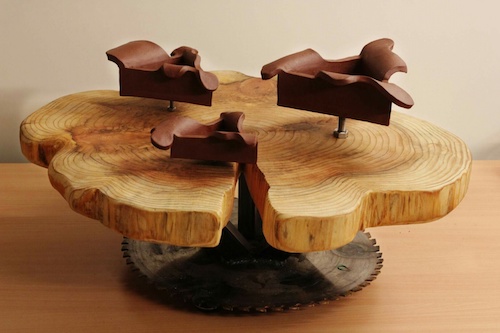
 Thursday, December 7, 2017 at 15:56 tagged
Thursday, December 7, 2017 at 15:56 tagged  art,
art,  installations,
installations,  sound
sound 
 Friday, May 13, 2016 at 15:02 tagged
Friday, May 13, 2016 at 15:02 tagged  art,
art,  installations,
installations,  sculpture,
sculpture,  sound,
sound,  soundart
soundart 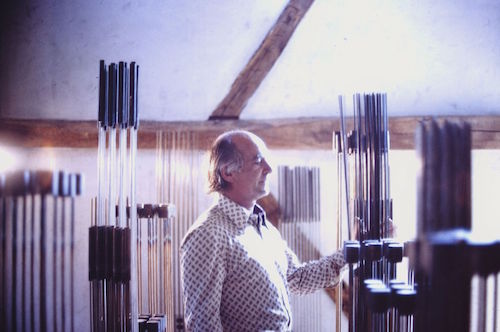
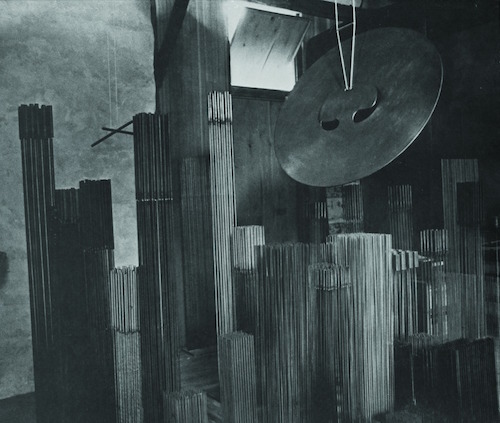
 Saturday, March 28, 2015 at 14:03 tagged
Saturday, March 28, 2015 at 14:03 tagged  art,
art,  fivesoundquestions,
fivesoundquestions,  instruments,
instruments,  interview,
interview,  sound
sound 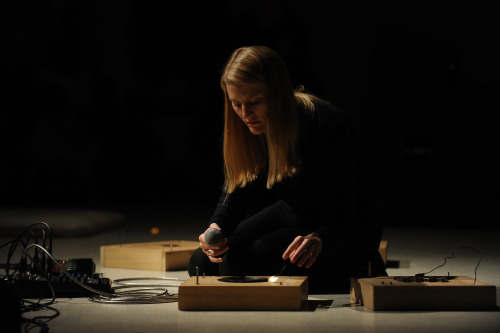
Lesley Flanigan is an experimental electronic musician living in New York City. Inspired by the physicality of sound, she builds her own instruments. Performing these instruments alongside traditional instrumentation that often includes her own voice, she creates a kind of physical electronic music. In her two-day “Residue” performance in the Guggenheim (below), she performs on minimal electronic instruments built from speakers and microphones. Periodically Flanigan enters the room and adds new elements to the system. As the textures react and build on each other, the space reverberates with subtle sonic imperfections, creating a physical sense to the sound in the space.
I found out about Lesley as she is playing some gigs in Europe, alongside sound artist Tristan Perich (whose Microtonal Wall we’ve featured before). One of them being the Fluister concert series in The Hague, the Netherlands on April 3rd. Furthermore they’ll be playing France, Switzerland and Germany as well in the coming days. Check out her website for more dates.
1. What sound from your childhood made the most impression on you?
First, is the sound of my mother’s voice resonating within her body. This is a sound I would hear with my ear was pressed to her chest as she sang or read to me. Her voice was so warm, like a blanket. Second, is the sound of my own voice. There was a hallway in my childhood home that had a natural reverb, and I used to sing in that space when no one was home. It was not a large space, but when I sang, my voice would soar and fill the air like I was in a cathedral.
2. How do you listen to the world around you?
When I actively listen, I am usually taking a long walk outside or sitting with my eyes shut.
3. Which place in the world do you favor for its sound?
Oddly, when I think of places that I favor for sound, they are all very quiet places… where sound is almost, but not entirely, absent.
4. How could we make sound improve our lives?
I think it’s about listening. I feel that when we take time to truly listen — to actively engage in listening to another person, to music, to sounds in nature and in cities, to all the many sounds in world around us — we give ourselves time to be present in our lives. That’s very meaningful to me.
5. What sound would you like to wake up to?
Ocean waves. Birds. Trees blowing in the wind. My husband and daughter laughing.
Thanks Lesley! See answers by other artists in the Five Sound Questions section, and be sure to check her out on one of her tour dates.
Timo Kahlen is a German sound sculptor and media artist who has been making works since the end of the 80’s. While his sculptures and installations often need to be seen in real life to experience the tactile, perceptible vibrations, Kahlen has chosen not to expose his sculptural work online in video form. His interactive “net art” works are equally interesting however. A few of these are featured below. Put on your headphones, and click on the images to try them out:
These works which run in the browser develop individually, are generative. Always live and different, as the viewer moves across, pauses or clicks at the responsive visual texture of the sound objects. As these works are made using Flash back in 2011, they won’t work on most smartphones, sadly.
There are quite some more to explore as well in his net art series, such as Scratch, Undo/Delete, Numbers. The interaction with Kahlen’s works isn’t so direct that it feels like a website, instead he’s really searching for a good balance between the autonomous and the direct, so it feels that there’s something organic to explore.
If you’d like to experience Kahlen’s physical sculptures, the next exhibition of his work is in Berlin, at the Ruine der Kuenste Berlin (Hittorfstr. 5, 14195 Berlin) from April 26 to May 24.
 Monday, February 23, 2015 at 21:57 tagged
Monday, February 23, 2015 at 21:57 tagged  air,
air,  art,
art,  field,
field,  infrasound,
infrasound,  installations,
installations,  lowfrequency
lowfrequency 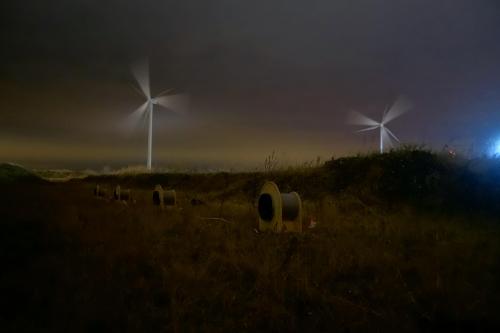
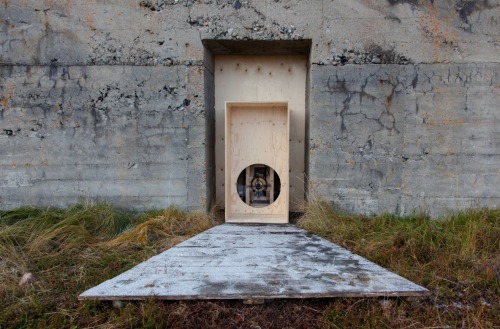 (footage from an earlier version)
(footage from an earlier version)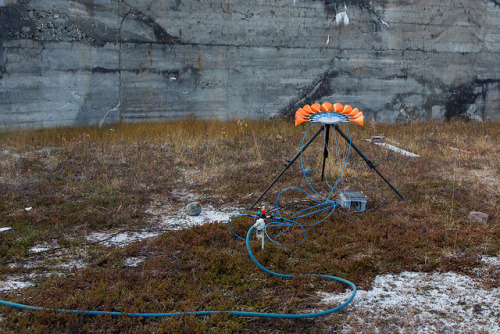 According to Ganchrow, infrasound is what connects the skies, oceans and earth. “Micro-movements in the earth crust can translate and arrive at mountain ranges. These move a nanometer backwards and forwards. That movement translates to a movement of air, that air produces a tone.” It’s a tone below the threshold of hearing, but still there’s a sensation of it, as it can shape the clouds coming over that mountain range, for example. You can view an interview with Raviv explaining infrasound here:
According to Ganchrow, infrasound is what connects the skies, oceans and earth. “Micro-movements in the earth crust can translate and arrive at mountain ranges. These move a nanometer backwards and forwards. That movement translates to a movement of air, that air produces a tone.” It’s a tone below the threshold of hearing, but still there’s a sensation of it, as it can shape the clouds coming over that mountain range, for example. You can view an interview with Raviv explaining infrasound here:
 Tuesday, February 10, 2015 at 15:48 tagged
Tuesday, February 10, 2015 at 15:48 tagged  art,
art,  resonating,
resonating,  sculpture,
sculpture,  sound,
sound,  transducers,
transducers,  wood
wood 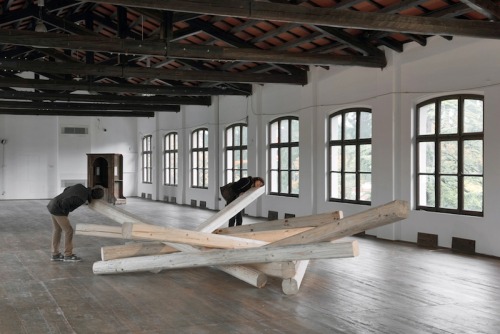
Listening is Making Sense lets you listen in on vibrations carried through thick wooden beams. The only way to experience the installation is by getting into physical contact with the resonant matter, by placing your ear directly on the wood.
Michele Spanghero is a sound- and visual artist whose work focuses on the acoustic art and the visual arts, trying to find a natural synthesis between these two forms. In this work that idea is clearly visible and audible, by using the material as a resonator.
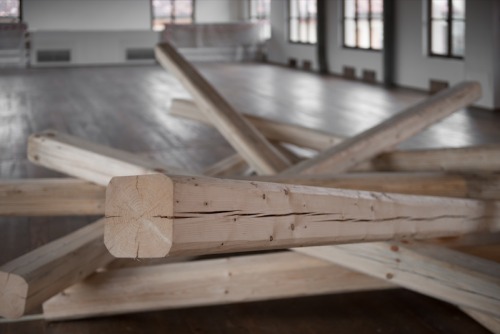
In one version the viewer has to bend down to the ground and put his ear on some wooden beams to listen to the sound propagating inside them, while in another the spectator is invited to an upward movement to place his ear directly on the beam supporting the roof of the building to hear a sound that flows into it. The synergy between the physical and audible is something that’s quite unique about Spanghero’s works.
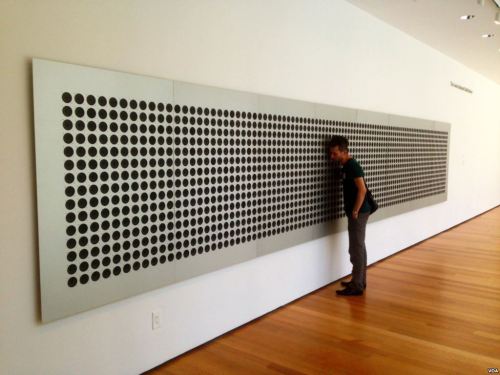
1500 speakers, each playing it’s own microtonal frequency, collectively spanning four octaves. That’s what Tristan Perich’s Microtonal Wall is. For some reason I thought I’d posted it before, but I hadn’t. The work of Tristan Perich has been quite a fascination for me, ever since he made his “1-bit music”; an electronic circuit assembled inside a CD case with a headphone jack on the side, playing back 40 minutes of lo-fi 1-bit electronic music, the lowest possible digital representation of audio. Microtonal Wall expands on this very clean idea by confronting you with 1500 individual 1-bit noisemakers, playing all at once.
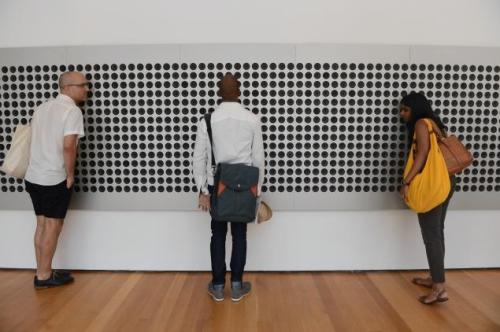
The beauty of Microtonal Wall is that when viewed from a distance it seems like noise, but when inspecting the installation by taking a closer look reveals that the noise is actually made up of individual frequencies.
It’s a very simple idea, but a very strong one. Noise is something which exists in our minds only- we just can’t keep track of all the different things happening at once, so it becomes “noise”. By being able to physically focus on one aspect, you’re able to experience that in this installation.
 Monday, December 1, 2014 at 13:45 tagged
Monday, December 1, 2014 at 13:45 tagged  art,
art,  installations,
installations,  percussion,
percussion,  sound,
sound,  soundart
soundart Nicolas Field is a musician, composer, and more recently, active in fine arts. He studied percussion in Amsterdam and The Hague, and is a founder of N-Collective, who strive to support and promote adventurous music.
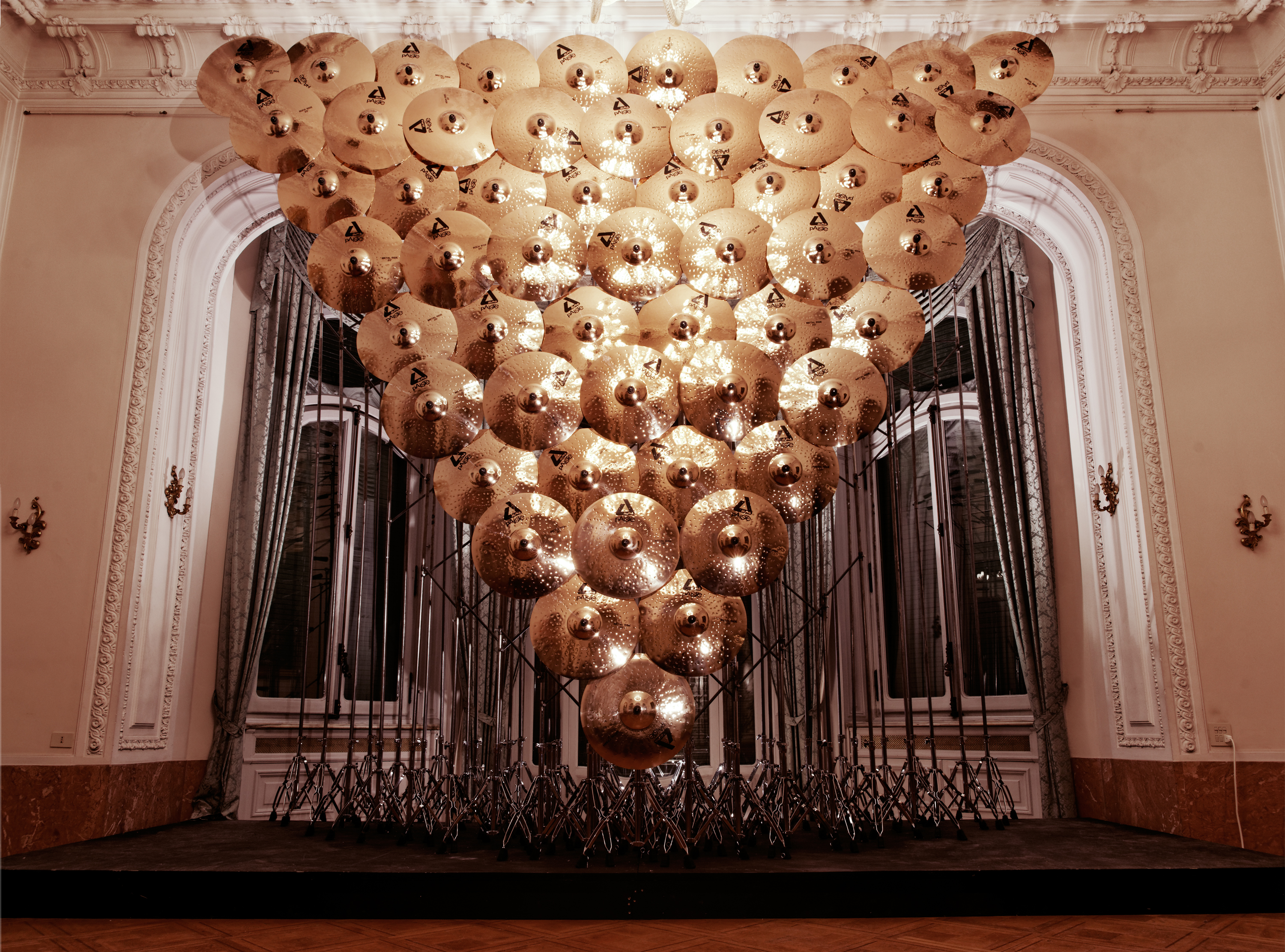
His work “Shimmering Beast” is a huge, upside down triangle, formed by sixty cymbals and stands, bass-transducers and light. This monumental and visually stunning collection of cymbals strike eachother lightly because of a resonating floor, and produce a shimmering sound. “Shimmering Beast” was created during a residence in the Swiss Institute in Rome and was a part of the Needcompany performance Caligula.
This installation is one of many which can be seen at Orkest! a group exhibition featuring works by Rutger Zuydervelt, Julian Sartorius, Oliver Beer, Rubén D’hers, Michael Schmid, and Konrad Smoleński. Orkest! can be seen from the 7th of december 2014 until the 6th of march 2015 at the netwerk / centre for Contemporary art in Aalst, Belgium. We’ll feature some other works from this exhibition in the coming weeks.
 Tuesday, November 25, 2014 at 12:52 tagged
Tuesday, November 25, 2014 at 12:52 tagged  art,
art,  bells,
bells,  exhibition,
exhibition,  sound,
sound,  soundart,
soundart,  spatial,
spatial,  speakers
speakers Konrad Smoleński is an artist working in different fields, often collaborating with other artists and musicians. He works and lives in Warschau and Bern. His works are often big and sculptural, connected to sound or video.
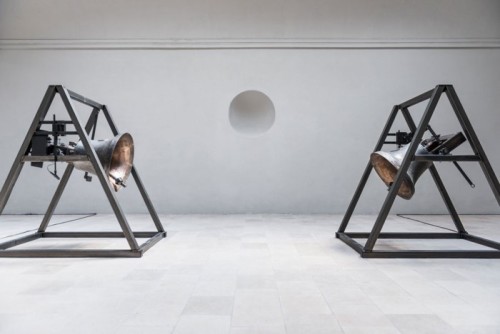
His work “Everything Was Forever, Until It Was No More”, is a sculptural instrument written for two bronze bells, two walls of loudspeakers and resonating objects, in this case resonating lockers. The composition links the rich symbolic sound of the clocks to the abstract sound of reverb and resonating noise. By using delay and other effects, Smoleński creates a world wherein history comes to a standstill.
This installation is one of many which can be seen at Orkest! a group exhibition featuring works by Rutger Zuydervelt, Julian Sartorius, Oliver Beer, Rubén D’hers, Michael Schmid, and Nicolas Field. Orkest! can be seen from the 7th of december 2014 until the 6th of march 2015 at the Netwerk / centre for Contemporary art in Aalst, Belgium. We’ll feature some other works from this exhibition in the coming weeks.
Korinsky is a Berlin-based art collective using technologies and the knowledge about human hearing processes to create sound installations that play with the contrast of visual and acoustic impressions. We’ve seen them before here at EL, with their project 3845 m/s.
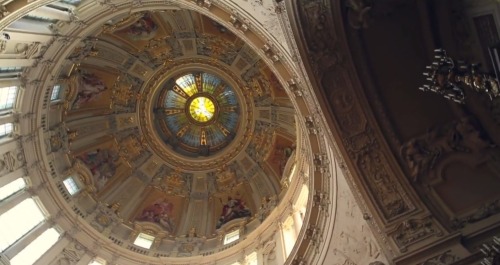
Their latest project is Volum. For this project, Korinsky worked together with a group of architecture students and professor Katrin Günther to explore the non-visual part of architecture. The students got to explore the way the Berliner Dom reacts to sounds, completely imprinting it’s architectonic qualities on the sounds in the dome. The absolutely amazing short documentary explains their work in the best way possible, so I won’t write too much about it.
Brilliant project. In an age where all disciplines seem to shift into each other, sound and architecture seem like two we’d really need to spend more time on. Like the narrator asks at the end of the short documentary:
“Next time you enter a building, think about it makes you feel. How does it affect you acoustically?”